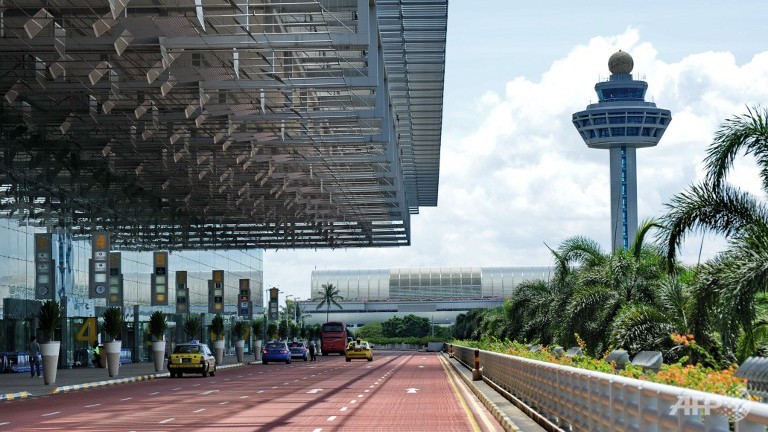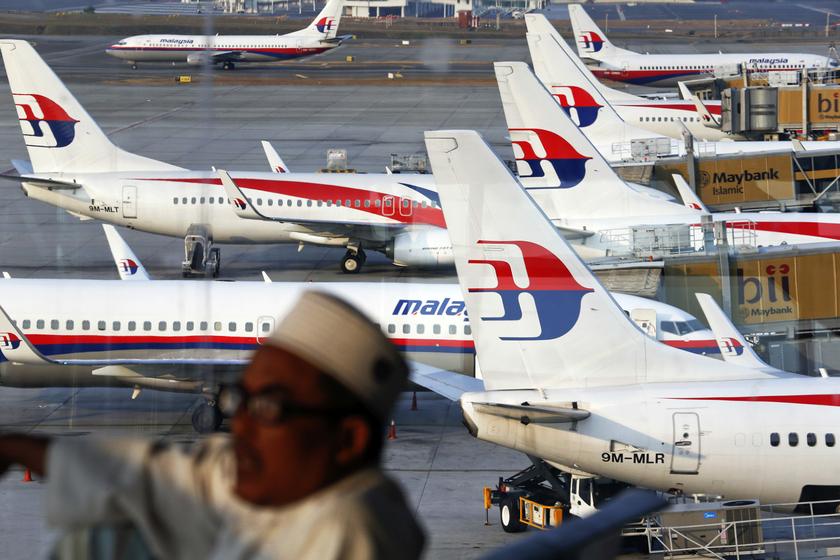KUALA LUMPUR, Aug 10 — The government has confirmed it will start charging a tax known as the departure levy on anyone who takes a flight out of Malaysia from September 1, but do our Asean neighbours do the same and how much do they charge?
Here’s a quick recap of Malaysia’s new departure tax:
 If you are flying economy, you will have to pay RM8 for a trip within Asean or RM20 if you are flying to countries beyond Asean.
If you are flying economy, you will have to pay RM8 for a trip within Asean or RM20 if you are flying to countries beyond Asean.
If you are flying premium (business or first class), you will have to pay RM50 for a trip within Asean, or RM150 for a trip outside Asean.
Children aged below two years are exempted, and in case you are wondering, it is an international standard.
Just be aware that this departure levy collection is to be paid to the government, and is separate from the passenger service charge of RM35 (Asean destinations) and RM70 (non-Asean international destinations) that is already being collected and paid to Malaysia Airports Holdings Berhad — the main airport operator in the country — for the maintenance and improvement of airport facilities.
A quick reminder: Asean members are Brunei, Cambodia, Indonesia, Laos, Myanmar, the Philippines, Singapore, Thailand and Vietnam.
Official information on charges for outbound tourists can be scarce for many countries, but here’s what Malay Mail found (based on sources such as the International Air Transport Association (IATA) website, news reports, regional airlines’ information and travel sites).
Please do note that the terms used by different countries on the fees may not be the same. It is also not always clear if the fees are airport taxes (which seem interchangeable with Malaysia’s passenger service charges) or actual departure taxes, as different terms may be used depending on the source.

1. Thailand
According to IATA, an airport tax of 700 baht (RM94.93 at current exchange rates) is charged on transit passengers if they leave the transit area and if the tax has not been included in their flight tickets.
IATA says the 700 baht tax is to be paid in Thai currency before these transit passengers (who leave the transit area) depart from Thailand.
According to the Civil Aviation Authority of Thailand’s information on PSC as of November 18, 2016, the rates collected depends on which operator handles which airport.
For example, 700 baht (RM94.93) and 100 baht (RM13.56) is the PSC for international destinations and domestic destinations at the six airports operated by Thailand Public Company Limited and perhaps most familiar to tourists (Suvarnabhumi and Don Muang in Bangkok, Chiang Mai, Chiang Rai, Hat Yai and Phuket).
Thailand’s official tourism website states that international departure taxes are now included in flight ticket prices, but did not specify the rates. It said there are no official departure taxes for domestic flights, but said some privately-owned airports such as Koh Samui Airport has been known to impose such fees.
In May 2019, Thailand’s Tourism and Sports Ministry was reported proposing a tourism tax aimed at restoring tourist destinations and to provide insurance coverage for tourists if they get injured or become ill there.
2. Myanmar
According to IATA, everyone flying out of Myanmar has to pay an airport tax of US$20 (RM83.14 at current exchange rates), while the airport tax for domestic flights is in its currency 3,000 khat (RM8.25 at current exchange rates).
This airport tax has to be paid at the airport of departure, with those exempted being passengers on transit using the same plane or crew members on duty.

3. Philippines
A travel tax is imposed on those who fly out of the country, with 50 per cent going to its Tourism Infrastructure and Enterprise Zone Authority (Tieza), 40 per cent to the Commission on Higher Education for tourism-related educational programmes and courses, and the remaining to the country’s National Commission for Culture and Arts.
Those exempted from paying the travel tax include overseas Filipino workers (Filipinos who are permanent residents abroad and with a stay period of below a year in the Philippines), infants aged below two, crew members, students on government scholarship, government staff on official trips.
The full travel tax rate is applicable to both citizens and non-citizens travelling on economy class at 1,620 pesos (RM130.72), or first class ticket-holders at PHP2,700 (RM217.86).
A standard reduced travel tax rate for economy class at PHP810 (RM65.36) and for first class at PHP1,350 (RM108.93) applies to children from the age of two years and one day to 12 years, accredited Filipino journalists on a work trip, those authorised by the Philippines president for national interest.
Even cheaper rates under the category of privileged reduced travel tax apply to those on economy class at PHP300 (RM24.21) or first class at PHP400 (RM32.28), if they are an overseas Filipino worker’s legitimate spouse, disabled child with no age limits, or unmarried children below the age of 21.
The rest are Asean countries which IATA did not record as having airport tax or taxes for passengers embarking at airports:
4. Vietnam
According to Vietnam Airlines, the international passenger service charge (PSC) is between US$8 to US$25 (RM33.26 to RM103.92 with current rates) per adult for flights out of Vietnam, depending on the respective airport in Vietnam.
For domestic PSCs for flights within Vietnam, it ranges from 60,000 to 100,000 dong (RM10.78 — RM17.96) per adult, again depending on the airport.
Infants aged below two are exempt from the international and domestic PSCs, while children aged two to 12 will be charged half of the PSC rates.
Travel site Lonely Planet did not specify the rate, but said the “departure tax” for Vietnam is included in the ticket price.
5. Cambodia
According to Lonely Planet, a departure tax of US$25 (RM103.92) is included in the ticket price for flights out of Cambodia.
Cambodia-based gaming operator NagaWorld describes the charges as an airport tax, listing it as US$25 for international flights and US$6 (RM24.94) for domestic flights.
6. Laos
Travel sites Lonely Planet and Travelfish state that a departure tax of US$10 (RM41.57) is imposed for international flights out of Laos, but note that this is now included in flight tickets at the time of purchase.
News reports state that a tourist tax of US$1 (RM4.16) was introduced on October 1, 2018 for all foreign passport holders at border checkpoints, but further information is lacking on this.
7. Indonesia
Lonely Planet states that the departure tax is now included in ticket prices, but did not provide the rate.
Based on a February 19 last year report by news site Tempo, the airport tax or PSC for Indonesia’s Soekarno-Hatta International Airport is increased for certain flights starting March 1, 2018.
The PSC rate for domestic flights from the airport’s Terminal 1 was adjusted to 65,000 rupiah (RM19), while Terminal 2’s domestic PSC was adjusted to IDR85,000 (RM24.83) and international PSC remained at IDR150,000 (RM43.81).
Terminal 3’s international flights PSC was increased to IDR230,000 (RM67.18) from March 1, 2018, while its domestic PSC was kept at IDR130,000 (RM37.97), Tempo reported.
8. Brunei
Lonely Planet said the departure tax is included in the ticket price, but did not specify the rate.

9. Singapore
On February 28, 2018, the Singapore government announced a new tax for passengers flying out from Changi Airport to help fund a new terminal and expansion, with the Airport Development Levy (ADL) at S$10.80 (RM32.61) for departing passengers and S$3 (RM9.06) for transit passengers.
Changi Airport also increased certain fees on passengers from July 2018, with the latest fees applicable on passengers departing from the airport from April 1, 2019 until March 31, 2020 being a total S$49.80 (RM150.36) inclusive of the ADL.
The S$49.80 charges for the non-transit passengers include a S$6.10 aviation levy and a passenger service and security fee (PSSF) of S$32.90, with the PSSF scheduled to go up S$2.50 annually for the next five years to eventually hit S$45.40 in April 2024.
The annual price hikes will not be imposed on passengers transiting through Changi Airport, which means they will only pay S$9 throughout the next five years (the S$3 government imposed-ADL and the S$ 6 PSSF).
In July 2018, it was reported that passengers at Singapore’s Seletar Airport — which is operating via a new terminal — will pay a lower total of levies and airport fees of S$29.
What Putrajaya has said:
During the April 10 parliamentary debates on the Departure Levy Bill 2019, Deputy Finance Minister Amiruddin Hamzah in the Dewan Rakyat provided a list compiled by Tourism Malaysia’s Asean division of a similar tax imposed on those flying out of their countries, as well as the equivalent in RM according to exchange rates then:
Thailand: International flights 700 baht (RM90.26), domestic flights 100 baht (RM12.89)
Singapore: S$47.30 (RM143.18),
Vietnam: International flights US$14 (RM57.37), domestic flights US$2 (RM8.2)
Indonesia: International flights IDR150k (RM43.42), domestic flights IDR40k-50k (RM11.58)
Philippines: International flights PHP750 (RM68.60), PHP1,620 (RM141.20)
Myanmar: Foreigners US$23 (RM93.80), locals RM10.90
The list has been disputed by Ayer Hitam MP Datuk Seri Wee Ka Siong who contended during the debate that the rates for Indonesia are for airport tax and not departure tax.
Based on the initial proposed departure levy rates of RM20 for Asean countries and RM40 for non-Asean countries, Amiruddin had in Parliament then said the Malaysian government is estimated to be able to collect between RM900 million to RM1 billion annually that will be used for the benefit of Malaysians.



















